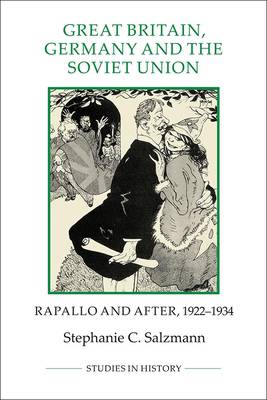
- Afhalen na 1 uur in een winkel met voorraad
- Gratis thuislevering in België vanaf € 30
- Ruim aanbod met 7 miljoen producten
- Afhalen na 1 uur in een winkel met voorraad
- Gratis thuislevering in België vanaf € 30
- Ruim aanbod met 7 miljoen producten
Zoeken
€ 59,95
+ 119 punten
Omschrijving
The treaty which Germany and the Soviet Union concluded in the small Italian seaside resort of Rapallo over Easter 1922 ranks among the diplomatic coups de surprise of the twentieth century. Even today the "ghost of Rapallo" has lost little of its original fascination. Besides the myths and historical re-interpretations, the real historical impact of the treaty of Rapallo lies in its consequences, particularly for the two victorious powers of the First World War: Britain and France. This study examines the impact of Rapallo on British foreign policy between 1922 and 1934, when the signing of the German-Polish non-aggression pact marked the visible end of the Rapallo friendship. The "myth of Rapallo" is the central theme of this story: ever since the treaty's conclusion Rapallo has been a byword for Soviet-German secret and potentially dangerous collaboration. This book describes how the British viewed Rapallo and how they dealt with this special relationship, and analyses whether it is justified to speak of a "myth of Rapallo" in British policy. While examining a particular aspect of international relations, it throws additional light on broader topics of European relations in the 1920s and early 1930s.
Specificaties
Betrokkenen
- Auteur(s):
- Uitgeverij:
Inhoud
- Aantal bladzijden:
- 216
- Taal:
- Engels
- Reeks:
- Reeksnummer:
- nr. 29
Eigenschappen
- Productcode (EAN):
- 9781843838401
- Verschijningsdatum:
- 15/08/2013
- Uitvoering:
- Paperback
- Formaat:
- Trade paperback (VS)
- Afmetingen:
- 156 mm x 234 mm
- Gewicht:
- 303 g

Alleen bij Standaard Boekhandel
+ 119 punten op je klantenkaart van Standaard Boekhandel
Beoordelingen
We publiceren alleen reviews die voldoen aan de voorwaarden voor reviews. Bekijk onze voorwaarden voor reviews.








